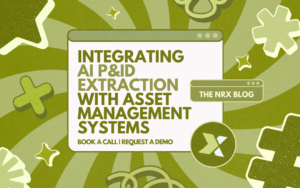According to Gartner, poor data quality costs organizations an average of $12.9 million annually due to inefficiencies and lost opportunities. In EAM, where accuracy drives maintenance efficiency and planning, these costs are amplified. Inaccurate data undermines trust in systems such as Oracle EAM, IFS, and others. In addition to this, it disrupts optimized maintenance workflows and drains maintenance productivity.

The Erosion of Trust in EAM Systems
EAM systems serve as the backbone of asset-intensive industries. From scheduling PMs to monitoring digital twins, they facilitate maintenance planning and regulatory compliance. However, over time, asset data can deteriorate. This often happens due to poor data governance, rushed migrations, or incomplete field-level object codes (FLOCs). As a result, the value of the entire CMMS ecosystem declines.
Users often encounter mismatched asset hierarchies and outdated maintenance records, which undermine the optimization goals that EAM systems are designed to achieve. Once trust has been broken in these systems, it becomes difficult to restore without proactive intervention. That’s where asset verification comes in.
What is Asset Verification?
Asset verification is the process of validating, updating, and reconciling existing asset records. This ensures that records accurately match real-world conditions. It includes checking locations, FLOCs, serial numbers, and operational status. Traditionally, verification was a manual and time-consuming process. However, new technologies such as AI Walkdown and P&ID extraction make it more efficient.
AI Walkdown uses computer vision and natural language processing (NLP) to identify equipment in site imagery. It then validates their presence and specifications against digital records. Meanwhile, P&ID (Piping and Instrumentation Diagram) extraction applies OCR and AI techniques to convert paper diagrams into structured digital data. Together, these methods contribute to more accurate asset hierarchies and better-aligned maintenance strategies.
Restoring Data Accuracy: A Use Case
Consider a global oil and gas company migrating from a legacy CMMS to HxGN EAM. During this process, they discovered that a significant percent of pump assets lacked proper FLOC assignments. This issue caused misrouted work orders and duplicate PMs. To resolve it, they could launch an AI Walkdown project. Within weeks, the company would verify 98% of physical assets. They can correct metadata and align asset hierarchies to ISO 14224 standards. This can result in a 15% improvement in wrench time and a noticeable uptick in technician trust in the system.

The Link to Optimized Maintenance
Without accurate data, optimized maintenance cannot exist. Predictive maintenance, for instance, relies on correctly mapped sensors. Maintenance strategies such as RCM (Reliability-Centered Maintenance) demand correct asset criticality rankings. Therefore, asset verification enables better decision-making and strategy development.
Moreover, digital twins need real-time and reliable data. If the EAM data is flawed, digital twins produce inaccurate simulations. However, by verifying physical-to-digital relationships through AI, companies reinforce the fidelity of their simulations and optimization models.
Future-Proofing Your EAM Investment
Investing in EAM Data Validation through asset verification projects is not just a maintenance initiative; it’s a strategic move. As industries digitalize, the cost of bad data compounds. Fortunately, AI tools reduce the time and cost of verification. Therefore, companies have a clear path to protect their EAM investment and support long-term performance.
Conclusion
To rebuild trust in your EAM system, start by verifying your data. Asset verification using AI Walkdown and P&ID extraction restores accuracy and confidence. This strengthens the foundation for optimized maintenance and better productivity. Verified data is no longer a bonus in today’s digital environment; it is a fundamental requirement for achieving optimized maintenance and long-term operational success.
Integrating AI P&ID Extraction with Asset Management Systems
ISO 14224 vs Other Maintenance Standards: What Sets It Apart?
Building Trust in Your Asset Data: Strategies for Governance
Share this article




